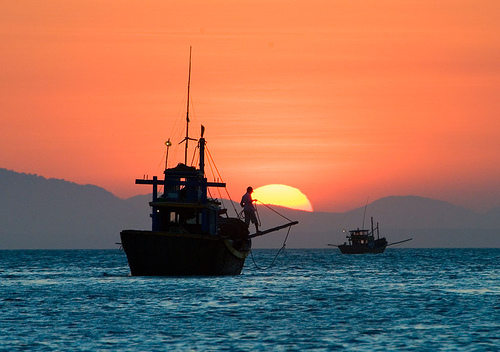Breaking
Report: Beijing adds weapons to South China Sea islands

South China Sea (Photo by MikeRussia, CC BY-SA 3.0)
BEIJING—China appears to have installed anti-aircraft and anti-missile weapons on its man-made islands in the strategically vital South China Sea, a U.S. security think-tank says, upping the stakes in what many see as a potential Asian powder keg.
The Center for Strategic and International Studies, or CSIS, said in a report late Wednesday that the anti-aircraft guns and close-in weapons systems designed to guard against missile attack have been placed on all seven of China’s newly created islands.
White House spokesman Josh Earnest said Thursday that he could not confirm the report, but Republican Sen. John McCain, chairman of the Senate Armed Services Committee, said the imagery shows China is militarizing the South China Sea. He called for a “determined response” from the U.
S. and its allies.
“The United States must take immediate steps to underscore our unwavering commitment to freedom of the seas and to enforce a stable balance of power in the region,” McCain said in a statement.
The outposts were built in recent years over objections by the U.S. and rival claimants by piling sand on top of coral reefs, followed by the construction of military-grade 3,000-meter (10,000-foot) airstrips, barracks, lighthouses, radar stations and other infrastructure.
CSIS based its conclusions on satellite images taken in mid-to-late November and published on the website of its Asia Maritime Transparency Initiative.
In a statement, China’s Defence Ministry repeated that development on the islands was mainly for civilian purposes, but added that defensive measures were “appropriate and legal.”
“For example, were someone to be threatening you with armed force outside your front door, would you not get ready even a slingshot?” the ministry statement said.
The Philippines, which has troops and villagers stationed on some reefs and islands near China’s new artificial islands, expressed concern despite recently improving relations with China.
“If true, it is a big concern for us and the international community who uses the South China Sea lanes for trade,” Defence Secretary Delfin Lorenzana said. “It would mean that the Chinese are militarizing the area, which is not good.”
CSIS experts wrote that China’s new island armaments “show that Beijing is serious about defence of its artificial islands in case of an armed contingency in the South China Sea.”
“Among other things, they would be the last line of defence against cruise missiles launched by the United States or others against these soon-to-be-operational air bases,” the report said.
Beijing says the islands are intended to boost maritime safety in the region while downplaying their military utility. They also mark China’s claim to ownership of practically the entire South China Sea.
Taiwan, Vietnam, the Philippines, Malaysia and Brunei also claim territory in the waterway through which an estimated $5 trillion in global trade passes each year, while the U.S. Navy insists on its right to operate throughout the area, including in waters close to China’s new outposts. China has strongly criticized such missions, known as freedom of navigation operations.
The U.S. has committed to beefing up its military presence in the area, although new uncertainty has been introduced by incoming president Donald Trump, who has called for a reconsideration of its commitments to its Asian allies, including Japan and South Korea, while simultaneously criticizing China and speaking with the president of China’s longtime rival Taiwan.
“The timing is significant in that these first clear images come amid Trump’s challenging comments about China and its South China Sea fortresses,” said Alexander Neill, a senior fellow for Asia-Pacific security for the International Institute for Strategic Studies based in Singapore.
Chinese President Xi Jinping said on a visit to the U.S. last year that “China does not intend to pursue militarization” of the area, prompting some foreign experts to accuse China of going back on its word with its new deployments.
Looking forward, the nature of China’s new military deployments will likely be calibrated in response to moves taken by the U.S., said the IISS’s Neill.
“China will argue that they are entitled to place whatever they want there in reaction to U.S. actions,” Neill said. “The big question is whether Trump will embark on a more strident or discordant policy in the South China Sea.”





















